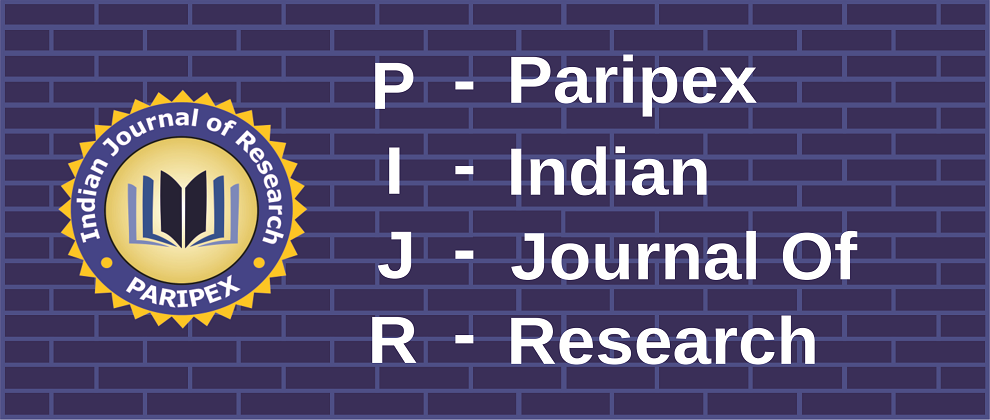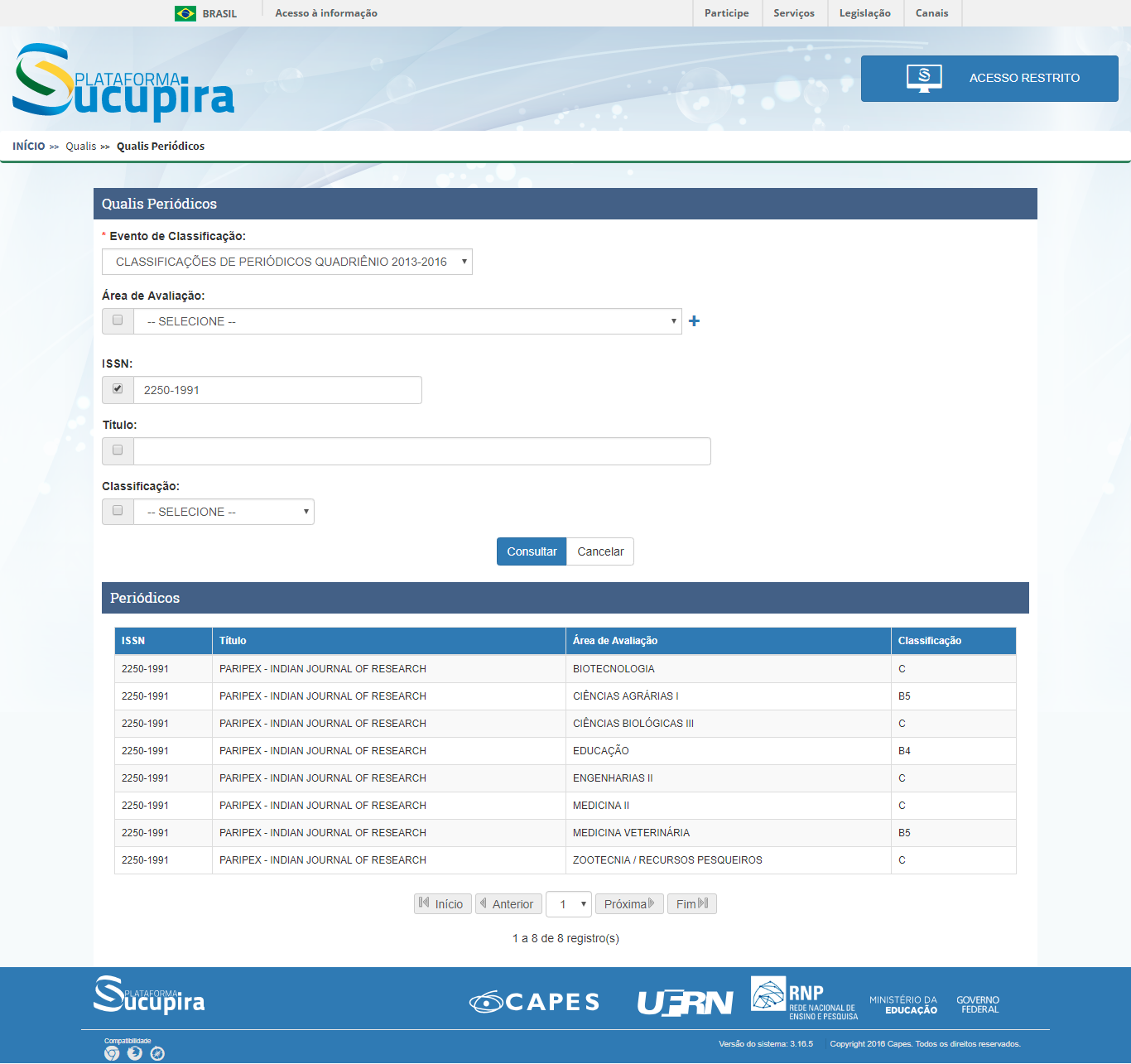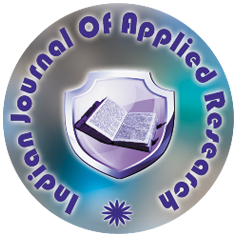- Company Registration
- Aim and Scope
- Editorial and Peer Review Processes
- Editorial Board Members
- Experience Of Editorial Board Members
- Guidelines for Authors
- Open Access
- Indexing
- Conflict of interest and funding
- Human and Animal Rights
- Inform Consent
- Copyright assignment
- Why Publish Your Article in Paripex - Indian Journal Of Research
- Advertising policies for print and web publications
World Wide Journals was founded in Ahmedabad (India) in 2011 by Dr. Khansa Memon. World Wide Journals is known as an innovative nursing, psychology, counseling, public health, social work, gerontology, and rehabilitation publisher. Dr. S. Menon is the CEO of World Wide Journals PVT LTD, which is privately held by Dr. Khansa Memon.
The primary goal of this open access online journal is to publish original research papers in all the subjects. It intends to publish 12 issues a year and is currently accepting manuscripts. World Wide Journals will also keep all the traditional features of paper print such as a unique cover page for every issue, continuous volume, issue, and page numbers. All manuscripts including reviews will be subjected to peer review and published online every 1st Day of the Month after acceptance.
The Journal is registered with National Institute of Science Communication and Information Resources, New Delhi having ISSN registration number 2250-1991.
Location of Corporate office(s)
Address: 303, Maharana Pratap Complex, Opp. Kapadia Guest House, B/H V.S.Hospital, Paldi, Ahmedabad-380006(Gujarat, India)
Paripex - Indian Journal Of Research (PIJR) is a double reviewed monthly print journal that accepts research works from scholars, academicians, professors, doctorates, lecturers, and corporate in their respective expertise of studies. Work after publication will be retrievable on the website bifurcated based on issues of the month and its publication date. Moreover, the journal serves the research world since October, 2011.
The journal is wide and available for diverse intellectual and educational pursuit from all corners of the society to enrich the learning experience of the group readers.
The periphery of the subject areas includes:
| Accountings | Finance |
| Management Accounting | Business |
| Commerce | Corporate Governance |
| Financial Accounting | Arts |
| Fine Arts | Designing |
| Medical | Bio-medical |
| clinical research | home science |
| Medical science | Psychology |
| Human ideology | Sociology |
| Economics | Education |
| Engineering | Electronics |
| Electrical | Information technology |
| Computer Science | Management |
| Organization behaviour | Organization psychology |
| Marketing management | Law |
| Corporate | Human Resources |
| Geography | History |
| Intellectual Property Rights | Industrial Laws |
| Journalism | Literature |
| Philosophy | Pharmaceutical Science |
| Political Science | Rural India |
| Statistics | Social Sciences |
Paripex - Indian Journal Of Research applies a double blind peer review. Referees remain anonymous for the author during the review procedure and the authors name is removed from the manuscript under review.
Only after publication, and only with the permission of the referee, the names of the reviewers are published in the article.
Each article is first assessed by two of the editors of the editorial board and, if it is judged suitable for PIJR, it is sent to two or three external referees for a double blind peer review. PIJR uses three different review forms (Research and Theory, Integrated Care Cases, Policy papers) all of which apply scientific criteria and take account of the purpose of the article and its merits for integrated care.
Based on the recommendations of the reviewers, the editors then decide whether the paper should be accepted as is, revised or rejected. In case of revisions, a final decision on publication will be made after resubmission. If there is no agreement on the part of the editors, the editor-in-chief will make the final decision.
We have mention our Editorial Board Members name here: Editorial Board Members
Our Editorial board members having minimum 10 years of rich experience in scholarly publishing in general and life science.
-
Format & Style:
Manuscripts:
All manuscripts must be printed in letter quality (font size 12) in double space on one side of A4 paper with margins of at least one inch on all sides.
Cover Page:
Manuscripts of a paper should have a cover page providing the title of the paper, the name(s), address, phone, fax numbers and e-mail address of all authors and acknowledgments, if any. Please restrict the author related information only to cover page. Further, please mention the subject under which the paper should be included.
Abstract:
Following the cover page, there should be an "abstract" page, which should contain the title of paper, the subtitle "Abstract" and a summary of the paper in double space. It should not exceed 150 words in length along with three to four key words. The text of the paper should not start on this page, but on a fresh page. References should be cited in the style prescribed in the publication manual of the American Psychological Association (APA Guidelines).
Please visit URL: http://www.library.cornell.edu/resrch/citmanage/apa
Figures & Tables:
Each figure/table should be numbered, titled. The position of figure or table should be indicated in the text on a separate line with the words "Table 1 about here"
Open access publishing The PIJR is an open access publication and its content is therefore free for anybody to access online, to read and download, as well as to copy and disseminate for educational purposes. Articles are published immediately upon acceptance and production of the final formatted version. When published online
We have indexed in following Indexing sites
| Google Scholar | Index Medicus |
| Citation Index | DJOF |
| DRJI | Cite Factor |
| PUBMED | Genamics |
| EZ3 | Open J-Gate |
| Cross Ref | I2OR |
| Indian Society For Health And Advanced Research | |
Authors are responsible for recognizing and disclosing financial and other conflicts of interest that might bias their work. They should acknowledge in the manuscript all financial support for the work and other financial or personal connections to the work.
Public trust in the peer review process and the credibility of published articles depend in part on how well conflict of interest is handled during writing, peer review, and editorial decision making. Conflict of interest exists when an author (or the authors institution), reviewer, or editor has financial or personal relationships that inappropriately influence (bias) his or her actions (such relationships are also known as dual commitments, competing interests, or competing loyalties). These relationships vary from those with negligible potential to those with great potential to influence judgment, and not all relationships represent true conflict of interest. The potential for conflict of interest can exist whether or not an individual believes that the relationship affects his or her scientific judgment. Financial relationships (such as employment, consultancies, stock ownership, honoraria, paid expert testimony) are the most easily identifiable conflicts of interest and the most likely to undermine the credibility of the journal, the authors, and of science itself. However, conflicts can occur for other reasons, such as personal relationships, academic competition, and intellectual passion.
When reporting experiments on human subjects, authors should indicate whether the procedures followed were in accordance with the ethical standards of the responsible committee on human experimentation (institutional and national) and with the Helsinki Declaration of 1975, as revised in 2000 (5). If doubt exists whether the research was conducted in accordance with the Helsinki Declaration, the authors must explain the rationale for their approach, and demonstrate that the institutional review body explicitly approved the doubtful aspects of the study. When reporting experiments on animals, authors should be asked to indicate whether the institutional and national guide for the care and use of laboratory animals was followed.
Patients have a right to privacy that should not be infringed without informed consent. Identifying information, including patients names, initials, or hospital numbers, should not be published in written descriptions, photographs, and pedigrees unless the information is essential for scientific purposes and the patient (or parent or guardian) gives written informed consent for publication. Informed consent for this purpose requires that a patient who is identifiable be shown the manuscript to be published. Authors should identify Individuals who provide writing assistance and disclose the funding source for this assistance.
Identifying details should be omitted if they are not essential. Complete anonymity is difficult to achieve, however, and informed consent should be obtained if there is any doubt. For example, masking the eye region in photographs of patients is inadequate protection of anonymity. If identifying characteristics are altered to protect anonymity, such as in genetic pedigrees, authors should provide assurance that alterations do not distort scientific meaning and editors should so note.
The requirement for informed consent should be included in the journals instructions for authors. When informed consent has been obtained it should be indicated in the published article.
Papers are accepted for publication on the understanding that exclusive copyright in the paper is assigned to the Publisher. Authors are asked to sign a copyright assignment form after acceptance of their papers.
High visibility
Paripex - Indian Journal Of Researchs open access policy allows maximum visibility of articles published in the journal as they are available to a wide, global audience. Articles that have been especially highly accessed are highlighted with a Highly accessed graphic, which appears on the journals contents pages and search results.
Speed of publication
Paripex - Indian Journal Of Research offers a fast publication schedule whilst maintaining rigorous peer review; all articles must be submitted online, and peer review is managed fully electronically (articles are distributed in PDF form, which is automatically generated from the submitted files). Articles will be published with their final citation after acceptance, in both fully browsable web form, and as a formatted PDF; the article will then be available through Paripex - Indian Journal Of Research,Website
Flexibility
Online publication in Paripex - Indian Journal Of Research gives authors the opportunity to publish large datasets, large numbers of color illustrations and moving pictures, to display data in a form that can be read directly by other software packages so as to allow readers to manipulate the data for themselves, and to create all relevant links (for example, to PubMed, to sequence and other databases, and to other articles).
All advertisements and commercially sponsored publications are independent from editorial decisions. Paripex - Indian Journal Of Research does not endorse any product or service marked as an advertisement or promoted by a sponsor in Paripex - Indian Journal Of Research publications. Editorial content is not compromised by commercial or financial interests, or by any specific arrangements with advertising clients or sponsors.
Paripex - Indian Journal Of Research reserves the right to decline any type of advertising that is damaging to the brand of Paripex - Indian Journal Of Research or is inappropriate to the content held on the Paripex - Indian Journal Of Research network.
Paripex - Indian Journal Of Research will not accept advertising for products or services known to be harmful to health (e.g. tobacco and alcohol products).
Advertisements may not be deceptive or misleading, and must be verifiable. Advertisements should clearly identify the advertiser and the product or service being offered. Exaggerated or extravagantly worded copy will not be allowed. Advertisements will not be accepted if they appear to be indecent or offensive in either text or artwork, or if they relate to content of a personal, racial, ethnic, sexual orientation, or religious nature.
Once an advertisement has been deployed online, it will be withdrawn from the journal site at any time if the Editor(s)-in-Chief or Publisher requests its removal.
Paripex - Indian Journal Of Research will not allow any treatment-specific or drug-specific campaign to be targeted to a specific article(s) or on any page where content relates to the product(s) being advertised. (Advertisers may not link to articles using keywords; they may not target advertising for a specific product on the condition that it appear in the same location and at the same time as a specific article mentioning that product and they may not refer to an article published at the same time as the advertisement appears).
If any advert is requested outside of Paripex - Indian Journal Of Research standard advertising positions then a request should be made to editorial who will respond with a full and final decision within two business days.
UGC CARE JOURNAL APPROVAL STATUS
-
 PIJR is a Peer-Reviewed Journal and valid as per New UGC Gazette regulations on minimum qualifications for appointment of teachers and other academic staff in universities and colleges (Date:18/07/2018)
View More Detail
PIJR is a Peer-Reviewed Journal and valid as per New UGC Gazette regulations on minimum qualifications for appointment of teachers and other academic staff in universities and colleges (Date:18/07/2018)
View More Detail
QUALIS APPROVED JOURNAL-BRAZIL,Click Here
Journal Template
| Download Template |
Latest News
Site Visitors: Statcounter


 MENU
MENU

 MENU
MENU




